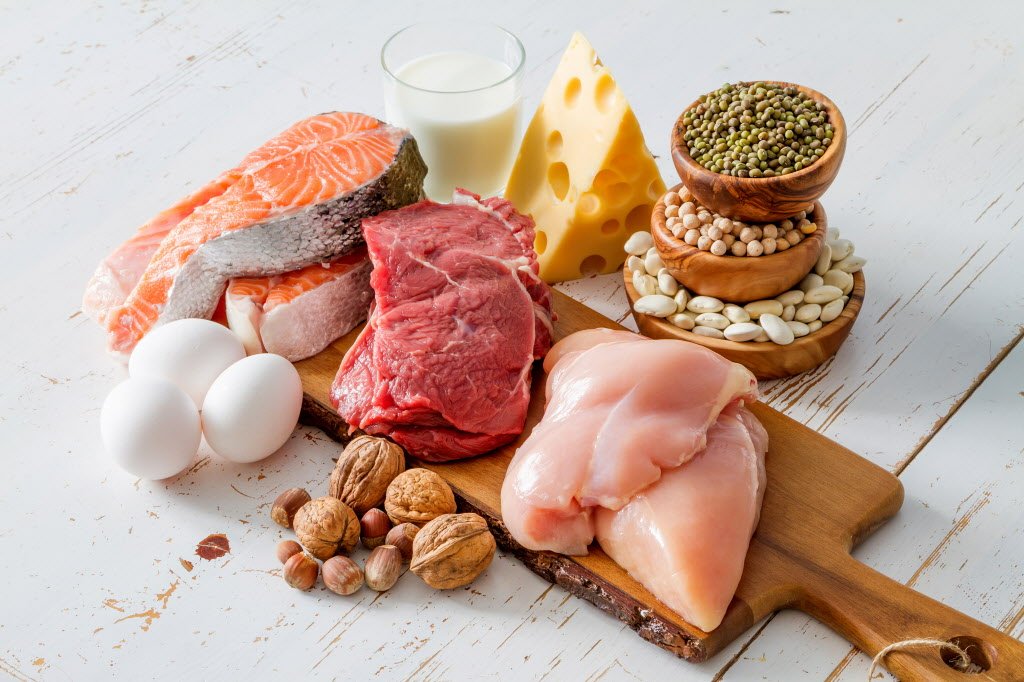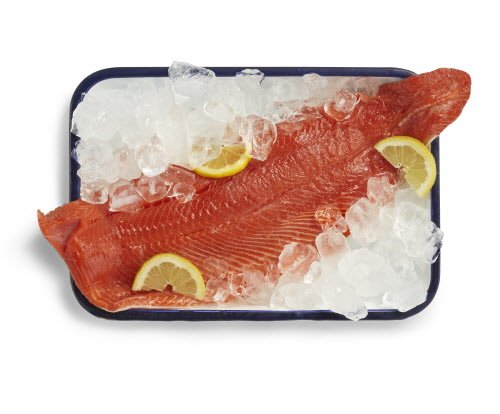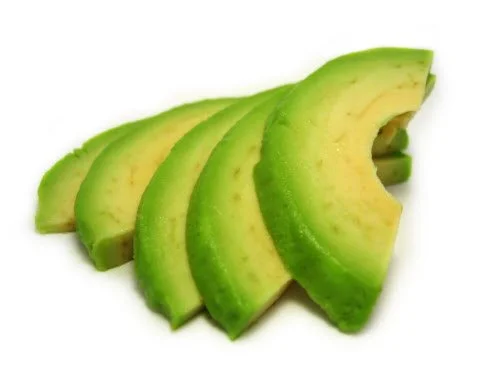KETO DIET: THE DO’S AND DON’T’S OF THIS HIGH-FAT, LOW-CARB NUTRITION PLAN (AS SEEN ON NOLA.COM)
I’m often asked about popular diets, so this week and next I’m covering two popular diets – the Keto Diet this week, and Whole30 next week – including the pros, cons and my take for each.
I am not advocating or recommending that we all follow these programs.
While these diets – or components of these diets – may be beneficial to some, my recommendation for the majority of the population is to keep it simple, streamlined, wholesome – less about hard rules with lists of do’s and don’t’s, and more about the key fundamentals: limit added sugars and white carbs. Emphasize lean proteins. Tons of vegetables, some fruits (mostly berries), and more of an emphasis on plant based fats when possible. Find what works for your individual lifestyle, taste preferences, budget and schedule.
If you do choose to try one or some of these popular diets, use it as an opportunity to help break and replace not-so-good habits, and to educate yourself and learn more about how you may respond to certain foods and ingredients so that you can make lasting behavioral changes that can stick around long after you’re “off” of a particular diet plan.
***
“I’m going keto.” I’m hearing this more and more often. And odds are you’ve heard someone talk about “going keto,” you’ve considered it yourself, or at the very least, you’ve seen “keto-friendly” products and recipes in stores, magazines, and social media.
Keto is a high-fat, low-carbohydrate diet, with limited protein allowed as well. As with many of these diets, healthful food selections within each of those food categories is what determines whether the diet is healthful.
The keto diet’s origins
“Keto” is short for “ketogenic” and is a type of diet that has been used for 100-plus years for children with uncontrolled seizures. Approximately half of those following a classic ketogenic diet experience at least a 50 percent reduction in seizures, and an estimated 15 percent become seizure-free.
This classic ketogenic therapeutic diet is a very-high-fat, extremely low-carbohydrate, low-protein diet, calling for a 4:1 ratio of fat to combined protein plus carbohydrate.
By comparison, the “keto” diet that some of your friends are doing may range anywhere from a ratio of 2:1 to 4:1, depending on which book, website or protocol they are using as a guide.
The keto diet is a high-fat, low-carb diet, with some protein. The key to keeping it healthful is selecting plant-based and better for you fats and proteins. (istock)
The general rule of thumb for a keto diet is a maximum of 50 grams of carbohydrate daily, or about 10 percent of total calories, though many keto advocates recommend about half this amount.
Protein goals are generally around 0.8 grams of protein per pound of lean body weight, with the rest of the calories coming from fat.
The science behind the keto diet
Carbohydrates are usually our body’s main source of energy, but because the ketogenic diet is so low in carbohydrates, fats become the primary fuel for the body. When we burn fat for energy we produce compounds called ketone bodies – which is why it’s called the “ketogenic diet.”
Ketones can be detected in the urine, blood and breath, so people following a ketogenic diet will often use test strips to check urine for ketones to confirm that they are in fact in “ketosis.”
Ketones are the result of the body burning fat for energy or fuel.
For people with diabetes, however, ketones can build up and lead to diabetic ketoacidosis, a serious medical condition. Symptoms include excessive thirst, frequent urination, fruity-scented breath, confusion, and consistently high blood sugar (more than 300). Diabetics should not go on this diet without consulting a physician. And, if they suspect diabetic ketoacidosis, should seek medical treatment immediately.
Proteins should come from nutrient-rich, lean ones, such as wild-caught fresh sockeye salmon filet. (Photo from Whole Foods Market)
What can you eat:
Very limited carbs: 50 grams per day or less, though most advocates recommend 20 grams or less. This includes carbohydrates from even lower-carb foods like vegetables, avocado, nuts and plain Greek yogurt.
Somewhat limited protein: The keto diet is not a “high-protein” “low-carb” diet. The protein recommendation is generally 0.8 grams protein per pound of fat-free body weight. You’ll need to know your percent of body fat for this – or you can use your lowest healthful weight.
If a very lean weight for you is 150 pounds, for example, then use 150 x 0.8 for a total of approximately 120 grams of protein daily.
Fats make up the rest: The keto diet is mostly fats, with fat being the “wild card” that varies by amount, depending on calorie needs as well as appetite. This can include animal fats like butter, ghee, heavy cream, mayonnaise and bacon, as well as plant-based saturated fats like coconut oil, olive oil and vegan mayo.
Keto Calculators are available online to help figure out your macronutrient goals (carb, protein, fat) for a keto diet. Keto blogger and cookbook author Maria Emmerich has an easy-to-use version on her website, MariaMindBodyHealth.com – just search “keto calculator.”
Although the keto diet can be challenging, it’s easier now than it was just 10 years ago. There are so many more “keto-friendly” recipes and products available, including low-carbohydrate wraps, noodles and potato alternatives, nut flours for baking, and snack foods like chips and bars that make it easier to incorporate a wider range of ketogenic meals and snacks.
WHAT’S OUT
Starchy and/or refined carbs are off-limits, including bread, rice, pasta, cereal, potatoes, pasta, rice or legumes.
Sugar of any type is also out, including table sugar, brown sugar, honey, molasses, agave and coconut sugar.
Fruits: Only a small amount of fruit is allowed; mostly berries, because of their lower carb content.
WHAT’S IN
Fats of all types.
Meat, fish, poultry and eggs are all allowed.
Nonstarchy vegetables and leafy greens, fresh or frozen; carbs from these vegetables need be factored into daily carbohydrate allotment.
Dairy, organic, full-fat is recommended for keto diets; carbs need to be accounted for in daily total.
No-calorie plant-based sweeteners like monkfruit, erythritol, stevia, including brands like Swerve and Truvia.
Beverages with zero sugar or artificial sweeteners, including water, sparkling water, tea and coffee.
A typical day on the keto diet:
Coffee with coconut oil, butter, MCT (or medium-chain triglycerides) oil or ghee (clarified butter)
Bulletproof coffee, also referred to as butter coffee, is popular among clean eating and Paleo devotees.
Breakfast: Some combo of fat plus protein: eggs, cheese, bacon, sausage, butter, etc.
Lunch: Burger (or burgers) with cheese, no bun. Salad with protein, avocado, nuts, oil and vinegar.
Dinner: Fish, chicken, beef or pork with vegetables cooked with olive oil, served with avocado, guacamole or mayo-based sauce.
Snacks: Hardboiled eggs, cheese, avocado, nuts, nut butter, berries, and DIY fat bombs. (“Fat bombs” are any type of little snack bite centered on high-fat ingredients like butter, bacon, and/or coconut oil. See our recipe below for a plant-based version of chocolate fudge fat bomb).
An explainer and a guide to shopping, meal planning and journaling.
My advice on the keto diet:
I don’t love a strict keto diet for most people, but I’m not adamantly opposed to it.
The reality is that we don’t need to be in a perpetual state of ketosis to drop extra body fat – countless people have lost significant amounts of body fat by cutting calories with a low-fat, carb-rich diet.
I’m an advocate of lower-carb, higher-protein diets, since even if we exercise on a regular basis, most people – especially those of us with sedentary jobs or hobbies – still spend a large portion of our day sitting at our desk, in our car, or on our sofa. That lack of activity means we burn fewer carbs.
The low-carb approach of the keto diet is positive, and the diet just takes “low carb” even further.
I have seen many clients and friends experience positive results with a ketogenic diet. One of the main advantages of following a keto diet is appetite control; we feel less hungry on the lower-carb keto plan, which generally results in a natural reduction in our calorie intake.
Some of the research shows that people eat 300 fewer calories per day – or more – without really trying.
As a result, following a keto diet can help to reduce cravings as well as drop body fat.
Other benefits include improved blood sugar control, cholesterol, blood pressure and inflammation, all of which are likely due to the extra weight lost as well as following the lower-carb diet.
Carbs from asparagus are not the reason many of us are overweight. (Ann Maloney, NOLA.com | The Times-Picayune archive)
A few things that I don’t love about the keto diet:
* It can make eating feel more like science than pleasure. Counting our “macros” – our carbs, protein and fat – for each meal and snack can feel burdensome. Many people simply get into an automated routine and end up eating the same combinations of foods for most meals and snacks.
* It limits our vegetable intake. I’ve had countless keto followers tell me they’re avoiding vegetables like asparagus, broccoli, eggplant, spinach and kale because they’re “too high in carbs.” Let’s be honest: Who among us can blame our extra pounds on too much asparagus?
For clients who want to go the keto-style route, I usually recommend bumping up the carb limit enough to account for a variety of nonstarchy vegetables.
* It’s easy to go overboard with high-fat, processed meats. We know that processed meats like sausage and bacon aren’t exactly superfoods. So, while they’re OK in small amounts, I recommend keeping these as “extras” to accompany a less-processed keto diet, not the focal point.
* It can add more barriers. Many people already think of “healthful eating” as limited or restrictive, and this takes it to the next level. Dining out with friends, traveling or preparing meals for the entire family all pose extra challenges when following a strict protocol like the keto diet.
* It can be heavy in animal fats. Choosing plant-based foods whenever possible, and this applies to the keto diet as well. Instead of focusing mainly on butter, bacon and cream, try incorporating more coconut oil, olive oil, and nuts, seeds and avocado.
Most fats should come from plant-based foods, such as avocados. (iStock)
The bottom line:
As with any diet, if it’s centered on foods that we enjoy and it fits within our lifestyle and habits, then we’re more likely to stick with it and see positive results.
Experimenting with a keto diet can serve as a valuable educational tool as well, helping us to recognize just how much carb (or fat or protein or calories) we’ve actually been consuming in our everyday diets.
If you decide to try a keto diet, track your food intake in an online or app-based food log like “My Fitness Pal.” It will tallying up all those numbers for you.
Consider adding a multivitamin and calcium supplement because you may not get the full spectrum of micronutrients from your food choices on the Keto Diet.
*As always, check with your physician before beginning any new program, and consider consulting with a registered dietitian to help you design a Keto Diet that fits within your lifestyle and your body’s needs.
You would never guess that this deliciously decadent recipe by Maria Emmerich has no sugar added and nearly zero carbs. Double up the cocoa for dark chocolate fudge, or mix things up by adding almond butter for “peanut butter cup” fudge, food-grade peppermint oil for peppermint chocolate fudge, or spices like cayenne, cinnamon and/or chipotle for a spicy cocoa fudge.
Keto Fudge
Makes 12 servings
1 cup coconut oil, soft yet still solid
1/4 cup full fat coconut milk
1/4 cup organic cocoa powder
1/4 cup Swerve confectioners
1 teaspoon vanilla extract
1/2 teaspoon almond extract
1/2 teaspoon Celtic sea salt
Place coconut oil and coconut milk medium sized bowl and mix with hand mixer on high for 6 minutes or until well combined and glossy.
Add remaining ingredients in bowl and stir on low speed until the cocoa is combined (so it doesn’t poof all over your kitchen). Increase speed and mix until everything is well combined. Taste the fudge and adjust to desired sweetness.
To make fudge squares, line a loaf pan with parchment or wax paper. Place fudge in the freezer for at least 15 minutes, until just set. Use edges of the parchment to pull fudge out of the pan. Place on a cutting board and remove parchment paper. Use a sharp knife to cut the fudge into squares.
Store in an airtight container in the freezer; it will liquefy if you leave it in a warm area.
Per serving: 170 calories, 19 grams fat, 16 grams plant-based saturated fat, 100 mg sodium, 5 grams carbs (1 gram net carbs), 1 gram fiber, 0 sugar, 1 gram protein.
***
Editor’s note: Registered dietitian Molly Kimball offers brand-name products as a consumer guide; she does not solicit product samples nor is paid to recommend items.






